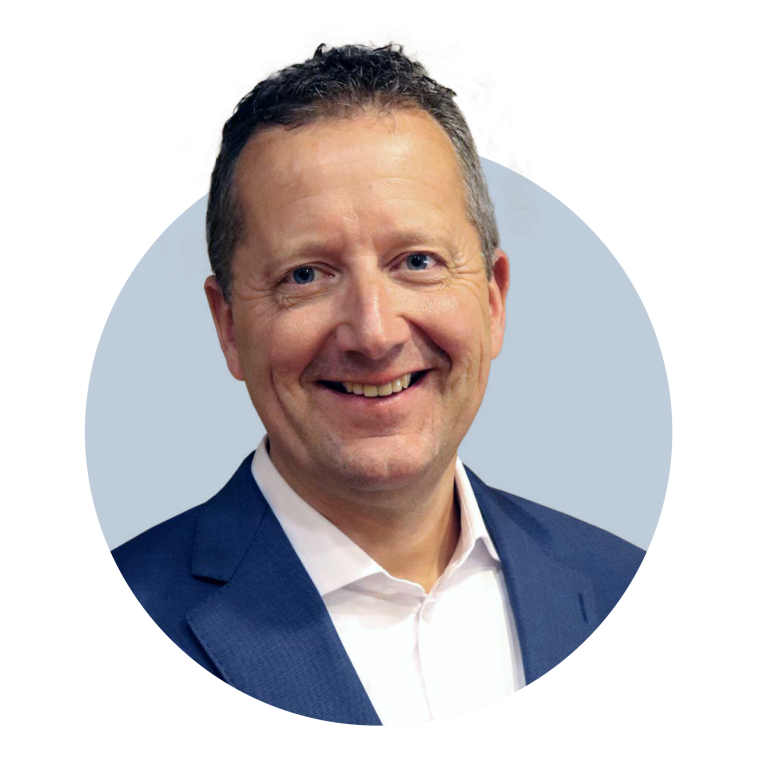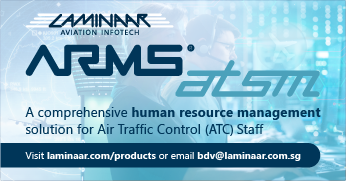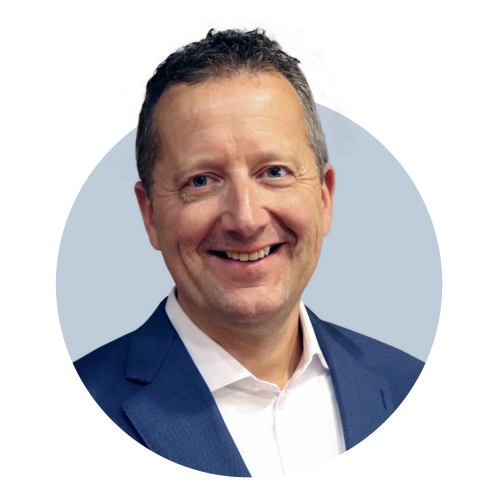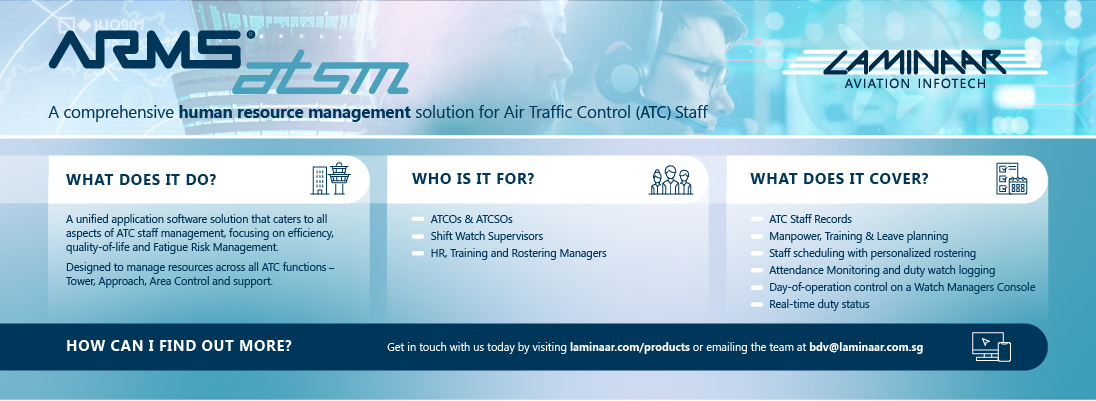Michiel van Dorst, CEO of Dutch ANSP, LVNL, and Chair, CANSO Europe (EC3), tells Graham Newton that aviation must always ensure that it is accepted by society.

Airspace Article



What are the priorities going forward from your CANSO perspective as Chair, EC3?
Safety is the foundation of everything we do and that will always remain the case. It is my belief we need to work on that social license to operate, meaning we must reduce noise and emissions. Next, we have to integrate drones. A coordinated vision for seamless airspace is the basis of CANSO’s Complete Air Traffic System (CATS). And then there is cybersecurity. We need our systems to be secure, especially as we integrate systems and have more access points and data than ever before.
Cybersecurity is a really challenging field. Those who wish us harm are getting better and so we must be better than that. We cooperate with the National Cybersecurity Centre in the Netherlands and work with all critical partners to make sure we are structurally strong and less vulnerable to attacks. It requires a lot of resources, and we are looking to provide even more resources next year. In fact, it is another crucial area for finding young talent. We need to recruit the best.
Overall, I am optimistic. We have smart people in this industry and have always overcome our challenges in the past. The fact is that people want to travel. It is a good thing because that connectivity helps us build a better world. But we must balance the benefits of aviation with its consequences. If we do that, the industry has a bright future.
Will the ANSP business model continue to evolve?
I’m sure it will. I’ve noticed that there are a lot more ANSP CEOs with a business background. That is good progress compared with the past. A business approach can create value for society and customers. Having that sense of what it takes to build a successful company will help ANSPs take the next steps forward.
Is there a particular technology that excites you?
What I personally love is RECAT-EU and Time-Based Separation (TBS). The RECAT-EU basically redefines aircraft categorisation and that will enable us to make better use of separation standards. And TBS fixes a time interval for arrivals. It is very safe and is used without a problem at Heathrow.
These initiatives will optimise traffic flow and runway capacity at Amsterdam Airport Schiphol. The benefits are three-fold. First, it gives the controllers a better visualisation tool to ensure separations are applied correctly. Second, we will be more resilient in strong winds and other adverse conditions. And third, there is more opportunity to make use of noise-preferential runways.
So, we’re improving safety, efficiency and the environment. Overall, rather than capacity increase, the aim is to make us more resilient. Our operations will be far more predictable for all stakeholders.
I am really excited about the potential. We are training our controllers in these procedures now and both projects should enter into service in the first quarter 2023.
What are your views on functional airspace blocks and the Single European Sky?
The functional airspace blocks (FABs) were logical when they were set-up. That was a proven approach at the time. But looking back, it feels old-fashioned.
In the intervening years, technology has taken a giant leap forward and given us new opportunities. LVNL is part of the Europe Central FAB (FABEC) and works with its partners to move various projects forward. But the fact is that our new air traffic system is provided by a Spanish company, Indra, and it makes sense to cooperate with other users of this technology. It is technology partnerships that will shape the future.
Of course, these partnerships also align with the goals of the Single European Sky (SES) but we have to move beyond an institutionalised approach.
This is not to say that FABEC is not working. It’s very important that we coordinate on cross-border projects. In this regard, the SES 2+ package is a giant step forward as it allows ANSPs to look at local targets too. LVNL has put a lot of effort into noise abatement, for example, and we will go beyond European Union targets.
Are you confident that you will meet demand in 2023 and how closely are you working with Amsterdam Schiphol Airport, which has also experienced some capacity challenges?
I personally think it should not only be about meeting every demand, but also about focusing on meeting demand in a sustainable way. We have to ensure that society continues to support aviation. And getting societal approval means, for example, we will always look to use noise-preferential runways or, when possible, circumnavigate small villages late at night.
Our license to operate depends on meeting the needs of society and younger generations as well as the needs of the airlines. Sustainability is so important. This is not just emissions but noise as well.
Schiphol was in the news a lot over summer and there were delays largely due to a lack of security staff. This did affect LVNL as we had to accommodate new traffic patterns as a result of the capacity caps at the airport and these were less predictable.
We have regular meetings with the airport and main airlines at Board and operational level, and I am confident that we will manage demand well in 2023. For example, LVNL is involved in planning the runway maintenance by the airport so that we can mitigate any challenges before they happen. And we speak with the Board of Airline Representatives in the Netherlands every few weeks.
As ever, 2023 will be a coordinated effort.
Why has diversity become so important to aviation and ANSPs?
It’s critical that we embrace diversity. On a personal level, I cannot conceive of a future where my daughter doesn’t have the same opportunities as my sons.
But there is a business rationale too. When I arrived at LVNL, there was just one woman in senior management. Now, our executive board is 40% female and we have about 30% women on the general staff. This means we have a much broader outlook, and we better understand societal needs. That, in turn, will make us a better business. It reduces our blind spots, helps us anticipate trends and gives us a stronger skillset. As a business, therefore, we can get ahead of the curve and change our services accordingly.
At LVNL, we undoubtedly have better stakeholder management, and our innovation speed has improved as has our system robustness. There is a strong link with our diversity efforts. Diversity upgrades the performance of a business.
How is 2023 looking for LVNL?
The major factor that we all must consider in Europe is the struggle to get talent to join air navigation service providers (ANSPs).
At LVNL, we not only need to recruit new air traffic controllers, but we also need technical people, and particularly engineers. We’ll have a better sense of the manpower we need as 2023 progresses and demand for air travel continues to recover. But we know that attracting qualified staff won’t be easy, and we are working on solutions that will enable us to serve demand for daily operations as well as working on innovation and projects.
At Delft University, there is a special faculty for aeronautics, and we are building a relationship with the faculty to help the talent there. We also have contact with the Amsterdam University of Applied Science. The point is to open the minds of students and make sure we are one of the options they consider.
Further, we have our Innovation Labs, or iLabs, where 10-12 students can work on their graduation projects or do an internship.
Although a lot of work is being done to connect to the younger generation, we are not ignoring other workers and we have a general media campaign to raise interest in LVNL in the labour market and to have people consider a career in air traffic management.


Michiel van Dorst, CEO of Dutch ANSP, LVNL, and Chair, CANSO Europe (EC3), tells Graham Newton that aviation must always ensure that it is accepted by society.

Read full article



Airspace Article
What are the priorities going forward from your CANSO perspective as Chair, EC3?
Safety is the foundation of everything we do and that will always remain the case. It is my belief we need to work on that social license to operate, meaning we must reduce noise and emissions. Next, we have to integrate drones. A coordinated vision for seamless airspace is the basis of CANSO’s Complete Air Traffic System (CATS). And then there is cybersecurity. We need our systems to be secure, especially as we integrate systems and have more access points and data than ever before.
Cybersecurity is a really challenging field. Those who wish us harm are getting better and so we must be better than that. We cooperate with the National Cybersecurity Centre in the Netherlands and work with all critical partners to make sure we are structurally strong and less vulnerable to attacks. It requires a lot of resources, and we are looking to provide even more resources next year. In fact, it is another crucial area for finding young talent. We need to recruit the best.
Overall, I am optimistic. We have smart people in this industry and have always overcome our challenges in the past. The fact is that people want to travel. It is a good thing because that connectivity helps us build a better world. But we must balance the benefits of aviation with its consequences. If we do that, the industry has a bright future.

Will the ANSP business model continue to evolve?
I’m sure it will. I’ve noticed that there are a lot more ANSP CEOs with a business background. That is good progress compared with the past. A business approach can create value for society and customers. Having that sense of what it takes to build a successful company will help ANSPs take the next steps forward.
Is there a particular technology that excites you?
What I personally love is RECAT-EU and Time-Based Separation (TBS). The RECAT-EU basically redefines aircraft categorisation and that will enable us to make better use of separation standards. And TBS fixes a time interval for arrivals. It is very safe and is used without a problem at Heathrow.
These initiatives will optimise traffic flow and runway capacity at Amsterdam Airport Schiphol. The benefits are three-fold. First, it gives the controllers a better visualisation tool to ensure separations are applied correctly. Second, we will be more resilient in strong winds and other adverse conditions. And third, there is more opportunity to make use of noise-preferential runways.
So, we’re improving safety, efficiency and the environment. Overall, rather than capacity increase, the aim is to make us more resilient. Our operations will be far more predictable for all stakeholders.
I am really excited about the potential. We are training our controllers in these procedures now and both projects should enter into service in the first quarter 2023.
What are your views on functional airspace blocks and the Single European Sky?
The functional airspace blocks (FABs) were logical when they were set-up. That was a proven approach at the time. But looking back, it feels old-fashioned.
In the intervening years, technology has taken a giant leap forward and given us new opportunities. LVNL is part of the Europe Central FAB (FABEC) and works with its partners to move various projects forward. But the fact is that our new air traffic system is provided by a Spanish company, Indra, and it makes sense to cooperate with other users of this technology. It is technology partnerships that will shape the future.
Of course, these partnerships also align with the goals of the Single European Sky (SES) but we have to move beyond an institutionalised approach.
This is not to say that FABEC is not working. It’s very important that we coordinate on cross-border projects. In this regard, the SES 2+ package is a giant step forward as it allows ANSPs to look at local targets too. LVNL has put a lot of effort into noise abatement, for example, and we will go beyond European Union targets.
Are you confident that you will meet demand in 2023 and how closely are you working with Amsterdam Schiphol Airport, which has also experienced some capacity challenges?
I personally think it should not only be about meeting every demand, but also about focusing on meeting demand in a sustainable way. We have to ensure that society continues to support aviation. And getting societal approval means, for example, we will always look to use noise-preferential runways or, when possible, circumnavigate small villages late at night.
Our license to operate depends on meeting the needs of society and younger generations as well as the needs of the airlines. Sustainability is so important. This is not just emissions but noise as well.
Schiphol was in the news a lot over summer and there were delays largely due to a lack of security staff. This did affect LVNL as we had to accommodate new traffic patterns as a result of the capacity caps at the airport and these were less predictable.
We have regular meetings with the airport and main airlines at Board and operational level, and I am confident that we will manage demand well in 2023. For example, LVNL is involved in planning the runway maintenance by the airport so that we can mitigate any challenges before they happen. And we speak with the Board of Airline Representatives in the Netherlands every few weeks.
As ever, 2023 will be a coordinated effort.
Why has diversity become so important to aviation and ANSPs?
It’s critical that we embrace diversity. On a personal level, I cannot conceive of a future where my daughter doesn’t have the same opportunities as my sons.
But there is a business rationale too. When I arrived at LVNL, there was just one woman in senior management. Now, our executive board is 40% female and we have about 30% women on the general staff. This means we have a much broader outlook, and we better understand societal needs. That, in turn, will make us a better business. It reduces our blind spots, helps us anticipate trends and gives us a stronger skillset. As a business, therefore, we can get ahead of the curve and change our services accordingly.
At LVNL, we undoubtedly have better stakeholder management, and our innovation speed has improved as has our system robustness. There is a strong link with our diversity efforts. Diversity upgrades the performance of a business.
How is 2023 looking for LVNL?
The major factor that we all must consider in Europe is the struggle to get talent to join air navigation service providers (ANSPs).
At LVNL, we not only need to recruit new air traffic controllers, but we also need technical people, and particularly engineers. We’ll have a better sense of the manpower we need as 2023 progresses and demand for air travel continues to recover. But we know that attracting qualified staff won’t be easy, and we are working on solutions that will enable us to serve demand for daily operations as well as working on innovation and projects.
At Delft University, there is a special faculty for aeronautics, and we are building a relationship with the faculty to help the talent there. We also have contact with the Amsterdam University of Applied Science. The point is to open the minds of students and make sure we are one of the options they consider.
Further, we have our Innovation Labs, or iLabs, where 10-12 students can work on their graduation projects or do an internship.
Although a lot of work is being done to connect to the younger generation, we are not ignoring other workers and we have a general media campaign to raise interest in LVNL in the labour market and to have people consider a career in air traffic management.

